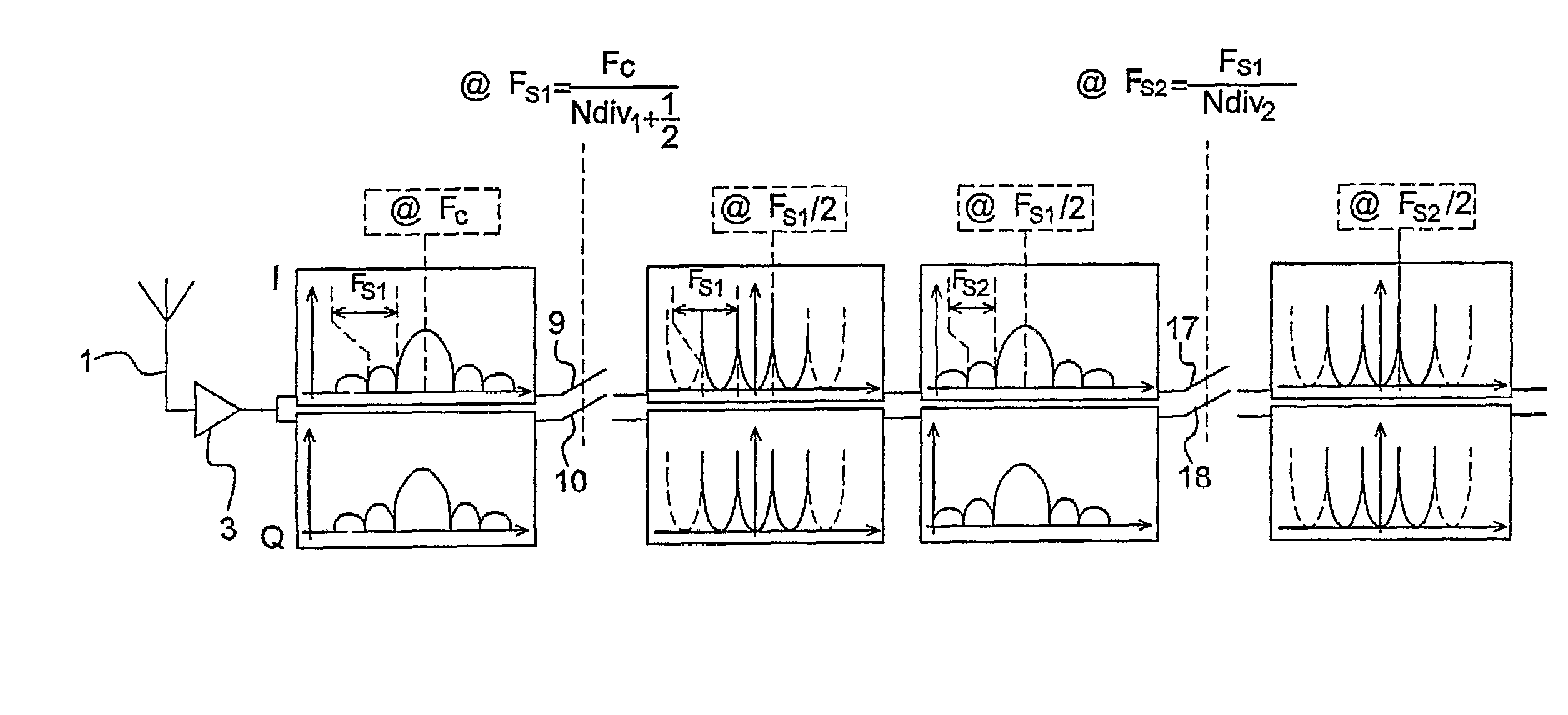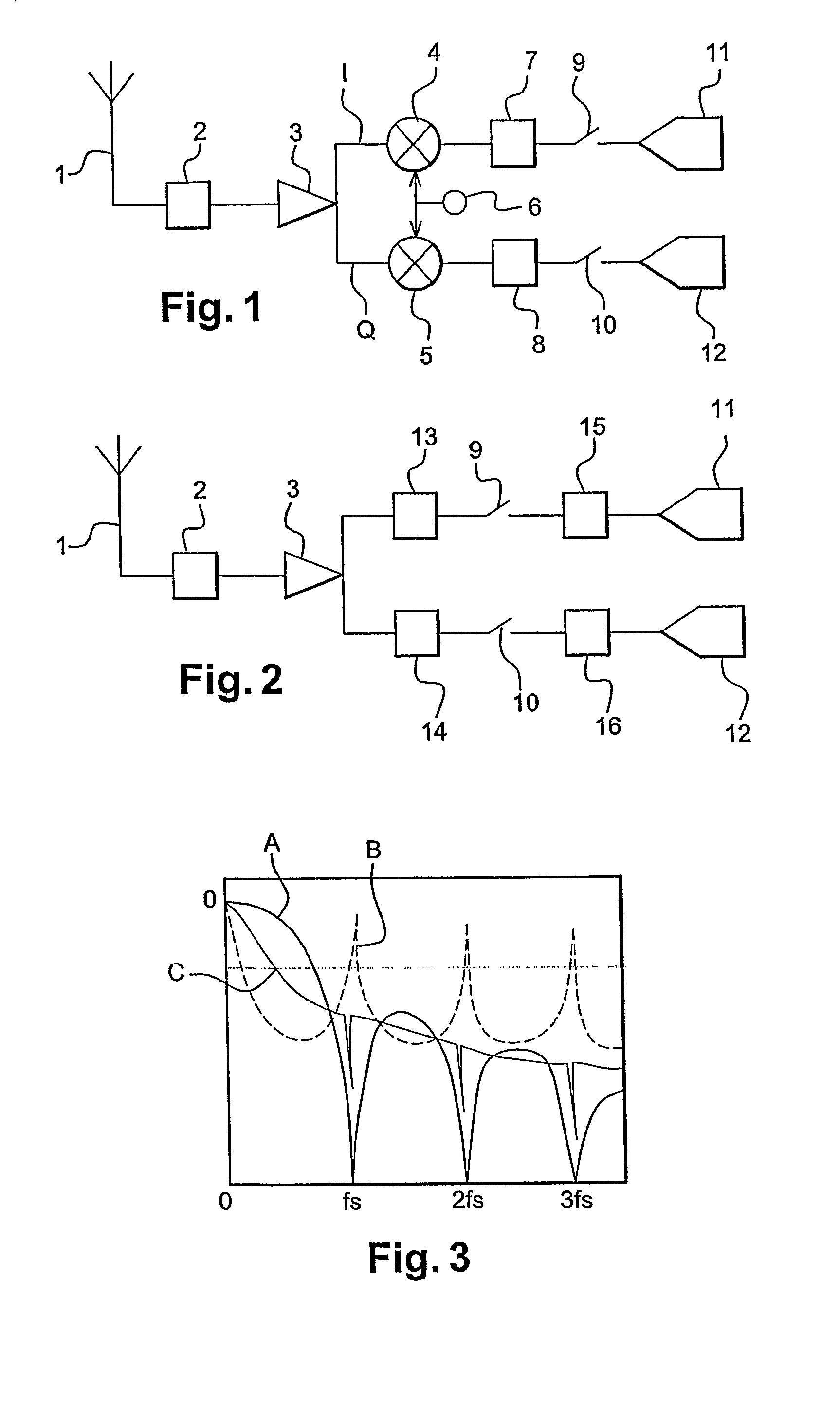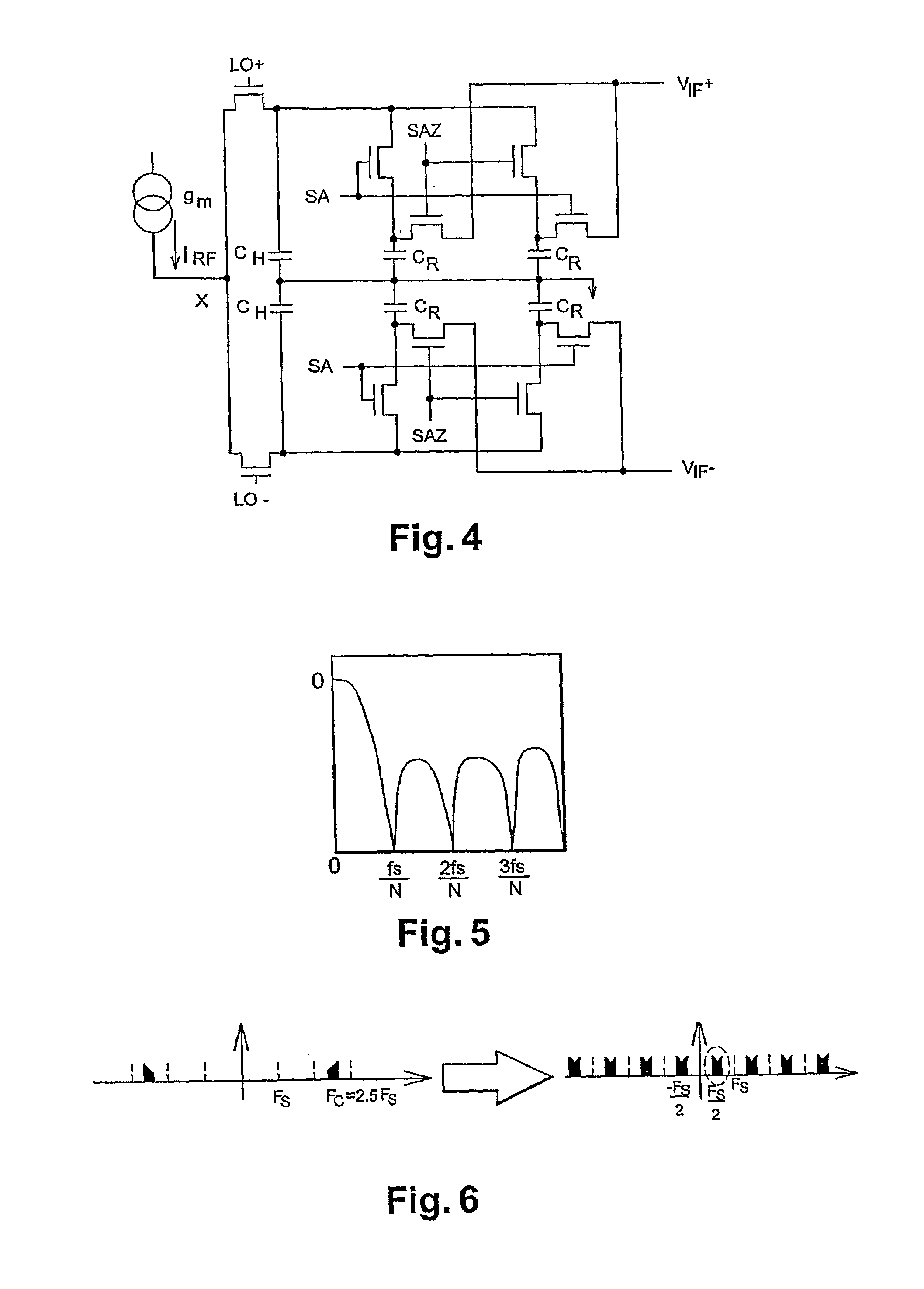Method of sampling an analogue radiofrequency signal
- Summary
- Abstract
- Description
- Claims
- Application Information
AI Technical Summary
Benefits of technology
Problems solved by technology
Method used
Image
Examples
Embodiment Construction
[0061]Thus, this invention is aimed as reusing sampling and filtering techniques described above, but according to the invention, it is proposed to bring the useful signal to be processed to a particular predetermined frequency, chosen as being half of the sampling frequency. This particular frequency is attractive for several reasons that will become clear from the following description made with reference to FIG. 6. Firstly, to bring the useful signal after sampling to half the sampling frequency, the ratio between the carrier frequency of the signal Fc and the sampling frequency Fs needs to be equal to Ndiv1+½, the term Ndiv1 being defined as an integer number. Thus, the following relation needs to be respected: Fc=(Ndiv1+½)·Fs.
[0062]According to the example in FIG. 6, Ndiv1 is taken equal to 2. The spectrum of the signal located around Fc=2.5Fs is shown at the left of the figure. After sampling, as shown on the spectrum at the right of the figure, the signal is folded to half of...
PUM
 Login to View More
Login to View More Abstract
Description
Claims
Application Information
 Login to View More
Login to View More - R&D
- Intellectual Property
- Life Sciences
- Materials
- Tech Scout
- Unparalleled Data Quality
- Higher Quality Content
- 60% Fewer Hallucinations
Browse by: Latest US Patents, China's latest patents, Technical Efficacy Thesaurus, Application Domain, Technology Topic, Popular Technical Reports.
© 2025 PatSnap. All rights reserved.Legal|Privacy policy|Modern Slavery Act Transparency Statement|Sitemap|About US| Contact US: help@patsnap.com



